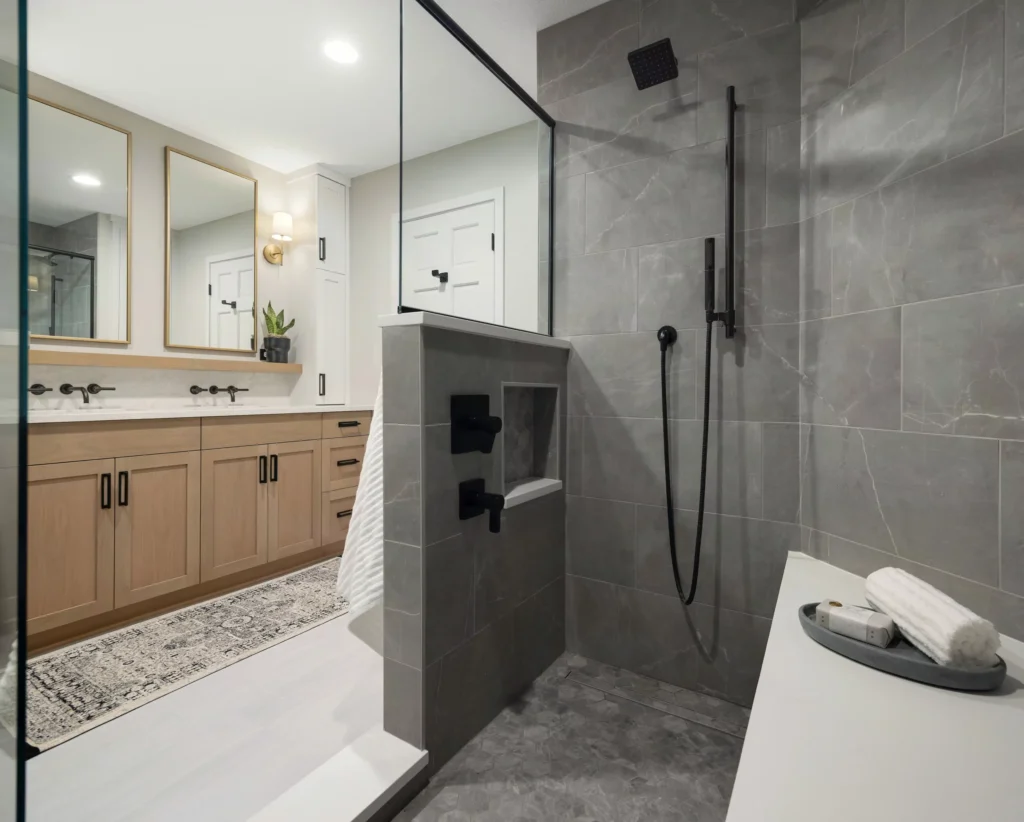
Renovating a bathroom can significantly enhance the value of your home, making it one of the most sought-after upgrades for potential buyers. Whether you’re a contractor, homeowner, or buyer, understanding the current trends and costs of bathroom remodeling is essential to making informed decisions.
In this article, we’ll dive into the average cost of a bathroom remodel in 2024, discuss what factors drive up the price, and highlight how costs can vary by state.
The cost of remodeling a bathroom depends on a variety of factors, such as the scope of the project, materials used, and labor costs. On average, the cost of remodeling a bathroom in 2024 can range from $6,000 to $15,000, with more luxurious renovations potentially surpassing $20,000.
As with any home improvement project, the cost of bathroom remodels has increased over the years. This is due to inflation, rising material costs, and an increased demand for premium features. Let’s look at how bathroom remodel prices have changed in the past 10 years.
| Year | Basic Remodel | Mid-Range Remodel | High-End Remodel |
|---|---|---|---|
| 2014 | $5,000 – $7,000 | $8,000 – $12,000 | $12,000 – $18,000 |
| 2024 | $6,000 – $10,000 | $10,000 – $15,000 | $15,000 – $25,000 |
Key takeaways:
Several factors contribute to the cost of a bathroom remodel. Here are some key aspects that can drive up the price:
a. Labor Costs
Labor typically accounts for about 20%-35% of the total cost of a bathroom remodel. Skilled trades such as plumbing, electrical, and tile installation can increase costs, especially if you hire high-end professionals.
b. Materials and Fixtures
Upgrading to premium materials such as granite countertops, custom cabinetry, and high-end flooring can significantly increase costs. Luxury fixtures like rain showers, advanced faucets, and smart toilets can also add to the price.
c. Layout Changes and Structural Work
If your remodel involves moving plumbing, changing the layout, or installing new windows, the costs will rise. Significant structural work often requires permits and professional oversight, increasing the total price.
d. Technology Features
Smart bathroom features like voice-controlled lights, temperature regulation, and self-cleaning toilets are becoming more popular. These upgrades can add anywhere from $800 to $3,000 to the overall cost.
Bathroom remodel costs can vary significantly depending on where you live. States with higher costs of living, such as California, New York, and Hawaii, tend to have higher remodeling costs compared to states like Texas, Florida, and Arizona. Below is an estimated range of bathroom remodel costs by state:
| State | Average Remodel Cost | Key Influences |
|---|---|---|
| California | $15,000 – $30,000 | High cost of labor, premium materials, and luxury finishes |
| New York | $12,000 – $25,000 | Expensive labor and quality materials due to urban setting |
| Texas | $8,000 – $15,000 | Lower cost of labor and materials, more affordable remodeling options |
| Florida | $10,000 – $20,000 | Moderate labor costs, common for mid-range remodels |
| Arizona | $8,500 – $17,000 | Competitive pricing for both basic and mid-range remodels |
Key Factors for State Differences:
Here’s a look at some of the most common bathroom upgrades and their average costs:
| Upgrade | Average Cost | Description |
|---|---|---|
| Walk-in Shower | $3,500 – $15,000 | Adds luxury and convenience; higher ROI. |
| New Vanity and Countertops | $1,000 – $5,000 | Modernizes the bathroom with more storage. |
| Heated Floors | $1,000 – $2,500 | Adds comfort, especially in colder climates. |
| Luxury Bathtub | $2,000 – $6,000 | Freestanding tubs are very popular in luxury remodels. |
| Smart Features | $800 – $3,000 | Voice-activated controls, smart mirrors, etc. |
Bathroom remodels in 2024 are not only a great investment for improving your home’s value but also a chance to customize your space to match your lifestyle. While costs have increased over the last decade, the return on investment (ROI) remains significant, particularly for high-impact upgrades like walk-in showers and luxury vanities.
By understanding the key drivers of remodeling costs and how they vary by state, homeowners and contractors can plan their projects more effectively and allocate resources where they will have the most impact.